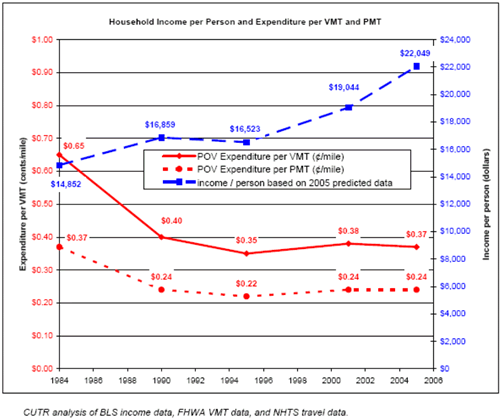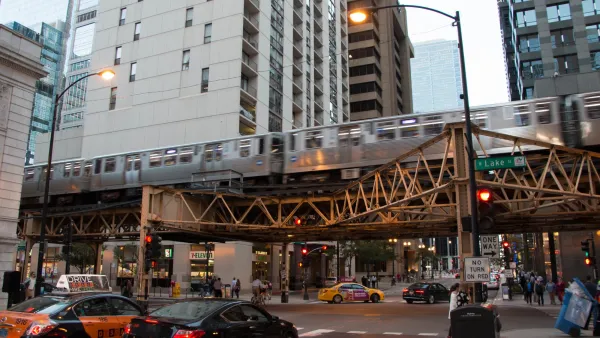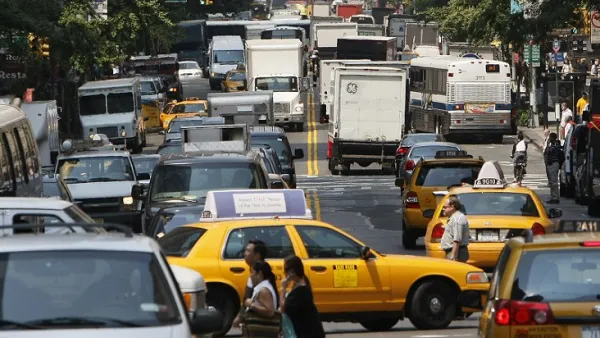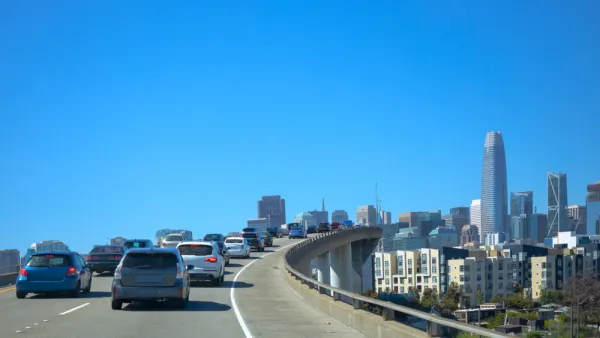In spring 2007, the Texas Transportation Institute and its partners will release the newest version of the "Mobility Report." This eagerly-awaited document will chronicle the worsening congestion in urban and suburban America. The report typically spawns a frenzy of media stories as folks eagerly peruse the ranking lists finding out just how their area did. While methodology tweaks and data issues might add a few wrinkles, no one will be surprised to see congestion worse than the prior report two years ago. Surprise, surprise!
In spring 2007, the Texas Transportation Institute and its partners will release the newest version of the "Mobility Report." This eagerly-awaited document will chronicle the worsening congestion in urban and suburban America. The report typically spawns a frenzy of media stories as folks eagerly peruse the ranking lists finding out just how their area did. While methodology tweaks and data issues might add a few wrinkles, no one will be surprised to see congestion worse than the prior report two years ago. Surprise, surprise! We failed to invest sufficiently in transportation infrastructure and services, and we failed to price transportation infrastructure and services correctly--but we continue to wail about the growing crisis. Some folks go on to explore the causes of worsening congestion, attributing it to failed urban development policies, misdirected transportation spending priorities, evidence that we can't build our way out of congestion, lack of transportation-land use coordination, and a number of other factors. In fact, a huge share of the problem is that we under-price travel and under-invest in transportation infrastructure and service. As shown in the figure below, income per capita (even adjusted for inflation) has been increasing, and travel costs have remained very low when measured by household spending per vehicle mile of travel.

Not surprisingly, there is no cost deterrent to encourage traveling less. While a typical household spent over $400 more on fuel in 2005 compared to 2004, and fuel costs may have again increased a few hundred dollars last year (BLS data not yet available), the additional average annual cost of fuel is far less than the cost of those fancy big wheels and low-profile tires, the add-on sunroof, or the stereo upgrades. A very competitive auto market, low interest rates, cars that are well into their teenage years before being junked, and safety improvements that keep insurance costs down have helped to keep total spending for auto transportation relatively stable. While politicians have been scared to death to even talk about gas tax increases, the contractors building roads or transit systems are not at all bashful about passing on their much higher costs for construction. Let's not even think about the cost increases for right-of-way. Construction cost indices alone show dramatic declines in buying power for transportation dollars. When this is coupled with right-of-way costs, maintenance of transportation costs, scope creep to satisfy every imaginable constituency, and assorted other cost elements, it is not uncommon to see project costs increasing 50 to 100% over the last three or four years.
Next time you throw a coin in the wishing well, wish for wisdom and backbone for our transportation decision-makers. Then go retrieve the coin--you might need it to pay tolls.

National Parks Layoffs Will Cause Communities to Lose Billions
Thousands of essential park workers were laid off this week, just before the busy spring break season.

Retro-silient?: America’s First “Eco-burb,” The Woodlands Turns 50
A master-planned community north of Houston offers lessons on green infrastructure and resilient design, but falls short of its founder’s lofty affordability and walkability goals.

Delivering for America Plan Will Downgrade Mail Service in at Least 49.5 Percent of Zip Codes
Republican and Democrat lawmakers criticize the plan for its disproportionate negative impact on rural communities.

Test News Post 1
This is a summary

Test News Headline 46
Test for the image on the front page.

Balancing Bombs and Butterflies: How the National Guard Protects a Rare Species
The National Guard at Fort Indiantown Gap uses GIS technology and land management strategies to balance military training with conservation efforts, ensuring the survival of the rare eastern regal fritillary butterfly.
Urban Design for Planners 1: Software Tools
This six-course series explores essential urban design concepts using open source software and equips planners with the tools they need to participate fully in the urban design process.
Planning for Universal Design
Learn the tools for implementing Universal Design in planning regulations.
EMC Planning Group, Inc.
Planetizen
Planetizen
Mpact (formerly Rail~Volution)
Great Falls Development Authority, Inc.
HUDs Office of Policy Development and Research
NYU Wagner Graduate School of Public Service






























